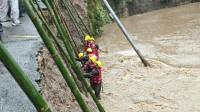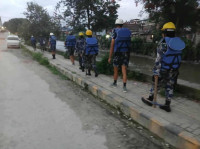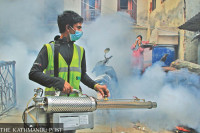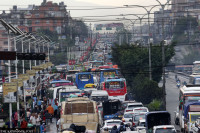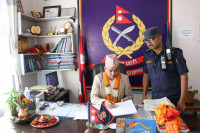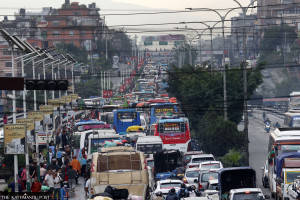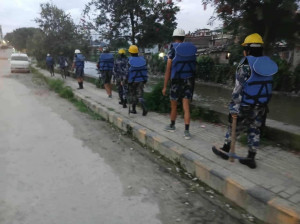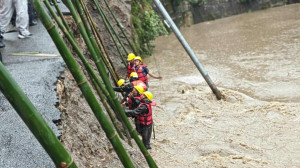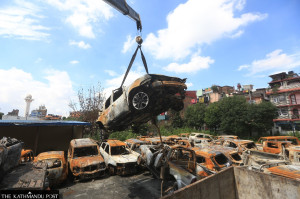Valley
Vehicle Fitness Test Centre yet to get a fine shape
Though five years have passed since the much-anticipated Vehicle Fitness Test Centre (VFTC) was first envisioned, it is yet to come into operation.
The future of the centre remains in limbo even after the installation of high-tech equipment to ascertain roadworthiness of public vehicles, among others, mainly due to the lack of a separate office building and required staff, transport authorities say.
“Everything necessary to bring the centre into operation has been finalised. However, we are still waiting for the government to provide us workspace and required workforce,” said Sharad Adhikary, director at the Department of Transport Management (DoTM).
Though the government has made multiple commitments to complete the construction of the office building and import all the necessary equipment required for the Teku-based centre at the earliest, the problems faced by the centre have still not been addressed completely, thus resulting in the delay.
The centre was designed at the cost of Rs 60 million and the deadline to start its operation was set for 2009. However, the plan could not materialise as the centre lacked power supply after the then Nepal Transport Corporation failed to clear the outstanding dues of Rs 6 million it owed the Nepal Electricity Authority.
Still, the DoTM in a proposal to the government last week demanded the establishment of a separate office for the centre. “The proposal highlights the need of 14 staffers, including four engineers to be hired in various capacities, to run the centre. If the
Cabinet gives a green signal to our proposal, the centre will start its operation soon,” Adhikary said.
The Transportation Management Act 1993 has made it mandatory for public vehicles to be checked every six months and private vehicles once a year. However, till now vehicle inspections are performed manually without the use of any technology. The vehicle fitness test conducted by the DoTM will require a public motor vehicle to pass a compulsory periodic inspection to determine safety and roadworthiness.
The centre has the capacity of testing six vehicles per hour. The facility is designed to conduct several tests such as Automobile Brake Test, Automobile Chassis Clearance Tester, Head Light Tester, Horn Tester, Automobile Sideslip Tester, Automobile Suspension Tester and the Automobile Wheel Load Tester. The centre is also designed to check over 100 interior and exterior parts of vehicles, including engines, brakes, horns, mudguards, body parts, headlights, springs, side slips, batteries and seat belts.




 16.18°C Kathmandu
16.18°C Kathmandu